Michal Balazia
CM3T: Framework for Efficient Multimodal Learning for Inhomogeneous Interaction Datasets
Jan 06, 2025Abstract:Challenges in cross-learning involve inhomogeneous or even inadequate amount of training data and lack of resources for retraining large pretrained models. Inspired by transfer learning techniques in NLP, adapters and prefix tuning, this paper presents a new model-agnostic plugin architecture for cross-learning, called CM3T, that adapts transformer-based models to new or missing information. We introduce two adapter blocks: multi-head vision adapters for transfer learning and cross-attention adapters for multimodal learning. Training becomes substantially efficient as the backbone and other plugins do not need to be finetuned along with these additions. Comparative and ablation studies on three datasets Epic-Kitchens-100, MPIIGroupInteraction and UDIVA v0.5 show efficacy of this framework on different recording settings and tasks. With only 12.8% trainable parameters compared to the backbone to process video input and only 22.3% trainable parameters for two additional modalities, we achieve comparable and even better results than the state-of-the-art. CM3T has no specific requirements for training or pretraining and is a step towards bridging the gap between a general model and specific practical applications of video classification.
MVP: Multimodal Emotion Recognition based on Video and Physiological Signals
Jan 06, 2025Abstract:Human emotions entail a complex set of behavioral, physiological and cognitive changes. Current state-of-the-art models fuse the behavioral and physiological components using classic machine learning, rather than recent deep learning techniques. We propose to fill this gap, designing the Multimodal for Video and Physio (MVP) architecture, streamlined to fuse video and physiological signals. Differently then others approaches, MVP exploits the benefits of attention to enable the use of long input sequences (1-2 minutes). We have studied video and physiological backbones for inputting long sequences and evaluated our method with respect to the state-of-the-art. Our results show that MVP outperforms former methods for emotion recognition based on facial videos, EDA, and ECG/PPG.
Identifying Surgical Instruments in Pedagogical Cataract Surgery Videos through an Optimized Aggregation Network
Jan 05, 2025Abstract:Instructional cataract surgery videos are crucial for ophthalmologists and trainees to observe surgical details repeatedly. This paper presents a deep learning model for real-time identification of surgical instruments in these videos, using a custom dataset scraped from open-access sources. Inspired by the architecture of YOLOV9, the model employs a Programmable Gradient Information (PGI) mechanism and a novel Generally-Optimized Efficient Layer Aggregation Network (Go-ELAN) to address the information bottleneck problem, enhancing Minimum Average Precision (mAP) at higher Non-Maximum Suppression Intersection over Union (NMS IoU) scores. The Go-ELAN YOLOV9 model, evaluated against YOLO v5, v7, v8, v9 vanilla, Laptool and DETR, achieves a superior mAP of 73.74 at IoU 0.5 on a dataset of 615 images with 10 instrument classes, demonstrating the effectiveness of the proposed model.
Introducing Gating and Context into Temporal Action Detection
Sep 06, 2024Abstract:Temporal Action Detection (TAD), the task of localizing and classifying actions in untrimmed video, remains challenging due to action overlaps and variable action durations. Recent findings suggest that TAD performance is dependent on the structural design of transformers rather than on the self-attention mechanism. Building on this insight, we propose a refined feature extraction process through lightweight, yet effective operations. First, we employ a local branch that employs parallel convolutions with varying window sizes to capture both fine-grained and coarse-grained temporal features. This branch incorporates a gating mechanism to select the most relevant features. Second, we introduce a context branch that uses boundary frames as key-value pairs to analyze their relationship with the central frame through cross-attention. The proposed method captures temporal dependencies and improves contextual understanding. Evaluations of the gating mechanism and context branch on challenging datasets (THUMOS14 and EPIC-KITCHEN 100) show a consistent improvement over the baseline and existing methods.
What Matters in Autonomous Driving Anomaly Detection: A Weakly Supervised Horizon
Aug 10, 2024Abstract:Video anomaly detection (VAD) in autonomous driving scenario is an important task, however it involves several challenges due to the ego-centric views and moving camera. Due to this, it remains largely under-explored. While recent developments in weakly-supervised VAD methods have shown remarkable progress in detecting critical real-world anomalies in static camera scenario, the development and validation of such methods are yet to be explored for moving camera VAD. This is mainly due to existing datasets like DoTA not following training pre-conditions of weakly-supervised learning. In this paper, we aim to promote weakly-supervised method development for autonomous driving VAD. We reorganize the DoTA dataset and aim to validate recent powerful weakly-supervised VAD methods on moving camera scenarios. Further, we provide a detailed analysis of what modifications on state-of-the-art methods can significantly improve the detection performance. Towards this, we propose a "feature transformation block" and through experimentation we show that our propositions can empower existing weakly-supervised VAD methods significantly in improving the VAD in autonomous driving. Our codes/dataset/demo will be released at github.com/ut21/WSAD-Driving
MultiMediate'23: Engagement Estimation and Bodily Behaviour Recognition in Social Interactions
Aug 16, 2023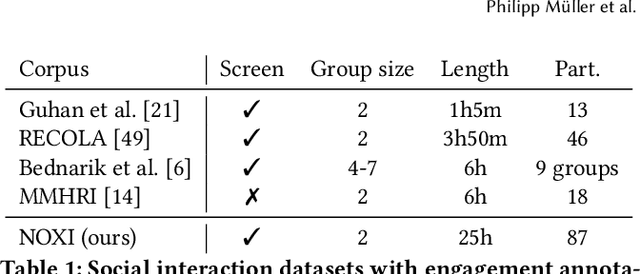
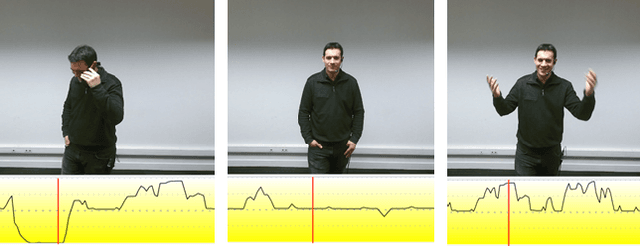
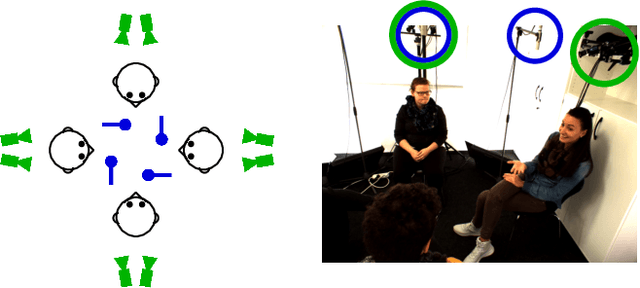
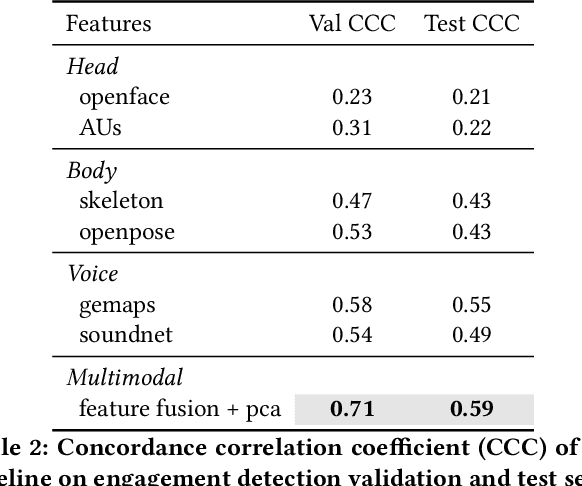
Abstract:Automatic analysis of human behaviour is a fundamental prerequisite for the creation of machines that can effectively interact with- and support humans in social interactions. In MultiMediate'23, we address two key human social behaviour analysis tasks for the first time in a controlled challenge: engagement estimation and bodily behaviour recognition in social interactions. This paper describes the MultiMediate'23 challenge and presents novel sets of annotations for both tasks. For engagement estimation we collected novel annotations on the NOvice eXpert Interaction (NOXI) database. For bodily behaviour recognition, we annotated test recordings of the MPIIGroupInteraction corpus with the BBSI annotation scheme. In addition, we present baseline results for both challenge tasks.
Multimodal Vision Transformers with Forced Attention for Behavior Analysis
Dec 07, 2022Abstract:Human behavior understanding requires looking at minute details in the large context of a scene containing multiple input modalities. It is necessary as it allows the design of more human-like machines. While transformer approaches have shown great improvements, they face multiple challenges such as lack of data or background noise. To tackle these, we introduce the Forced Attention (FAt) Transformer which utilize forced attention with a modified backbone for input encoding and a use of additional inputs. In addition to improving the performance on different tasks and inputs, the modification requires less time and memory resources. We provide a model for a generalised feature extraction for tasks concerning social signals and behavior analysis. Our focus is on understanding behavior in videos where people are interacting with each other or talking into the camera which simulates the first person point of view in social interaction. FAt Transformers are applied to two downstream tasks: personality recognition and body language recognition. We achieve state-of-the-art results for Udiva v0.5, First Impressions v2 and MPII Group Interaction datasets. We further provide an extensive ablation study of the proposed architecture.
Bodily Behaviors in Social Interaction: Novel Annotations and State-of-the-Art Evaluation
Jul 26, 2022
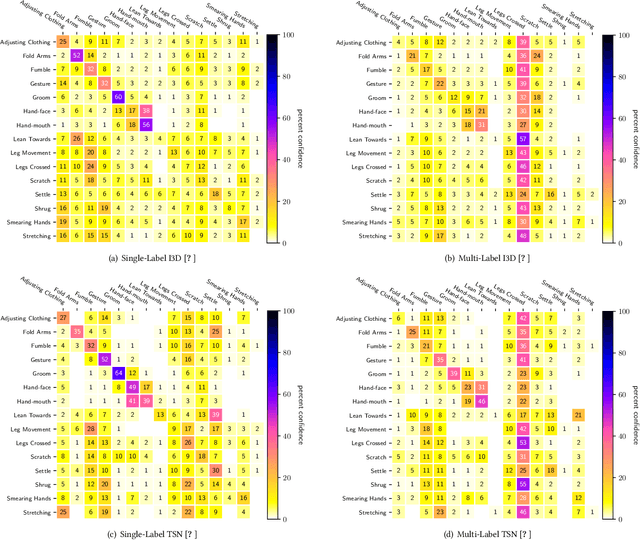
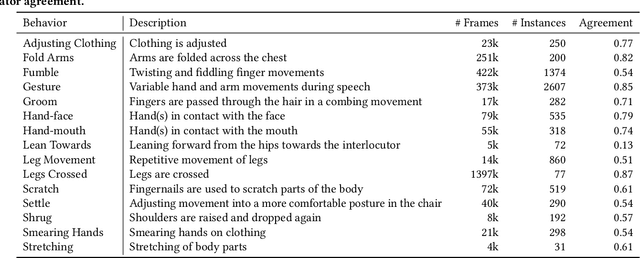
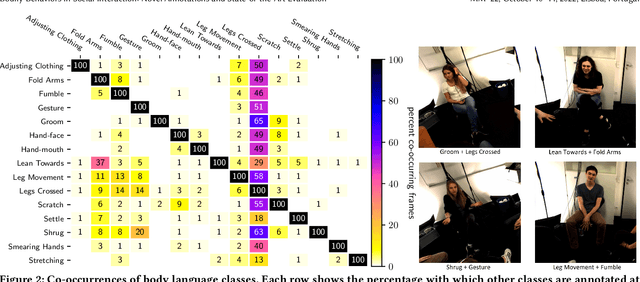
Abstract:Body language is an eye-catching social signal and its automatic analysis can significantly advance artificial intelligence systems to understand and actively participate in social interactions. While computer vision has made impressive progress in low-level tasks like head and body pose estimation, the detection of more subtle behaviors such as gesturing, grooming, or fumbling is not well explored. In this paper we present BBSI, the first set of annotations of complex Bodily Behaviors embedded in continuous Social Interactions in a group setting. Based on previous work in psychology, we manually annotated 26 hours of spontaneous human behavior in the MPIIGroupInteraction dataset with 15 distinct body language classes. We present comprehensive descriptive statistics on the resulting dataset as well as results of annotation quality evaluations. For automatic detection of these behaviors, we adapt the Pyramid Dilated Attention Network (PDAN), a state-of-the-art approach for human action detection. We perform experiments using four variants of spatial-temporal features as input to PDAN: Two-Stream Inflated 3D CNN, Temporal Segment Networks, Temporal Shift Module and Swin Transformer. Results are promising and indicate a great room for improvement in this difficult task. Representing a key piece in the puzzle towards automatic understanding of social behavior, BBSI is fully available to the research community.
Interpretable Gait Recognition by Granger Causality
Jun 15, 2022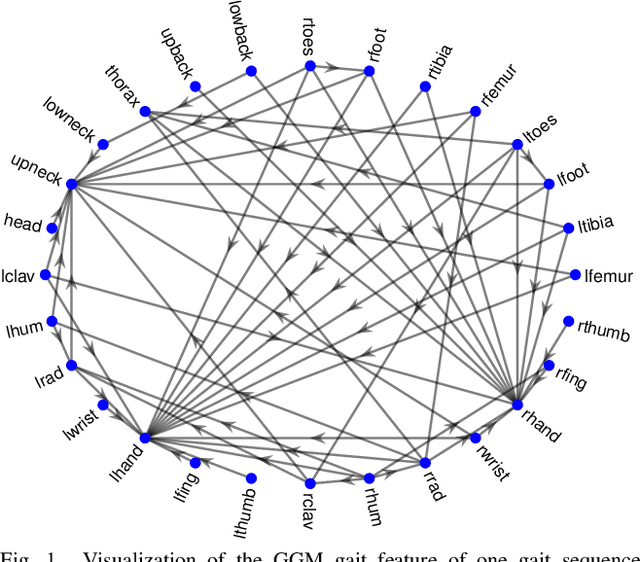
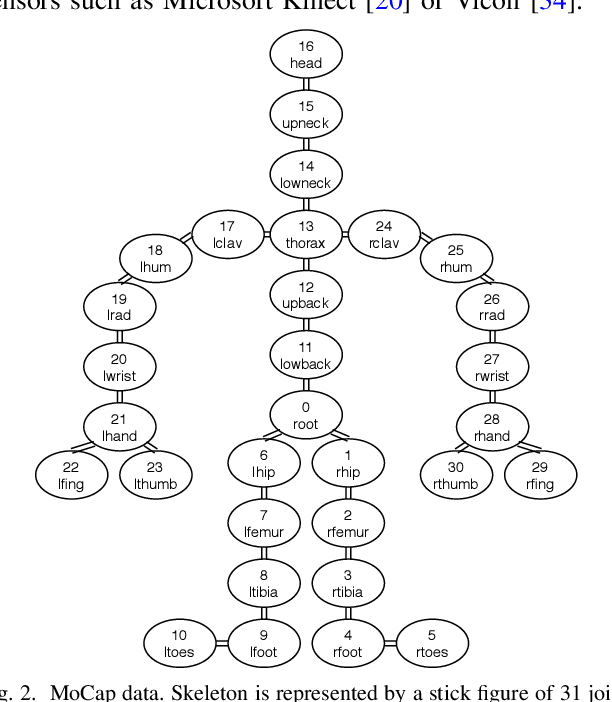
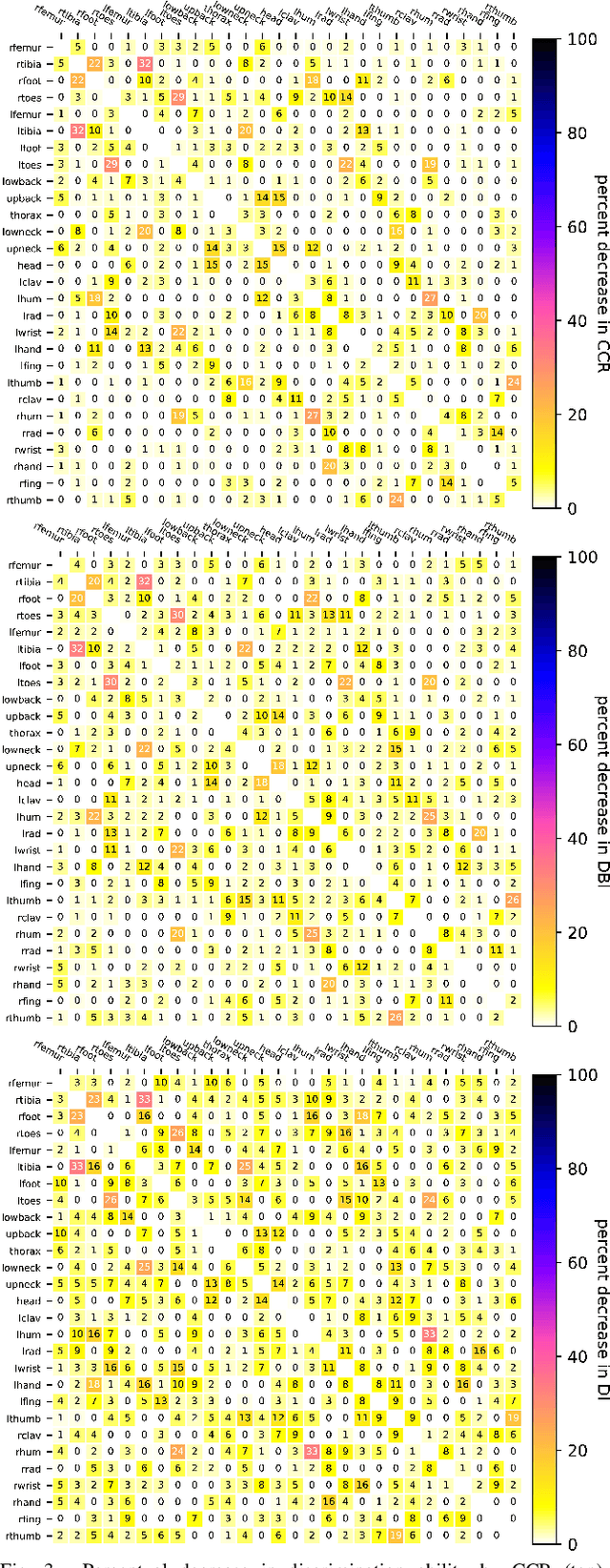
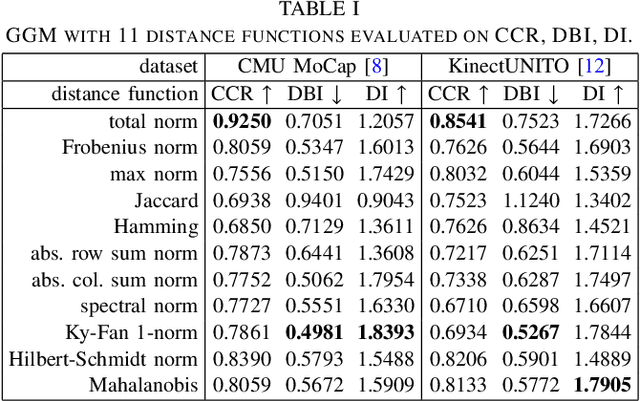
Abstract:Which joint interactions in the human gait cycle can be used as biometric characteristics? Most current methods on gait recognition suffer from the lack of interpretability. We propose an interpretable feature representation of gait sequences by the graphical Granger causal inference. Gait sequence of a person in the standardized motion capture format, constituting a set of 3D joint spatial trajectories, is envisaged as a causal system of joints interacting in time. We apply the graphical Granger model (GGM) to obtain the so-called Granger causal graph among joints as a discriminative and visually interpretable representation of a person's gait. We evaluate eleven distance functions in the GGM feature space by established classification and class-separability evaluation metrics. Our experiments indicate that, depending on the metric, the most appropriate distance functions for the GGM are the total norm distance and the Ky-Fan 1-norm distance. Experiments also show that the GGM is able to detect the most discriminative joint interactions and that it outperforms five related interpretable models in correct classification rate and in Davies-Bouldin index. The proposed GGM model can serve as a complementary tool for gait analysis in kinesiology or for gait recognition in video surveillance.
Multimodal Personality Recognition using Cross-Attention Transformer and Behaviour Encoding
Dec 22, 2021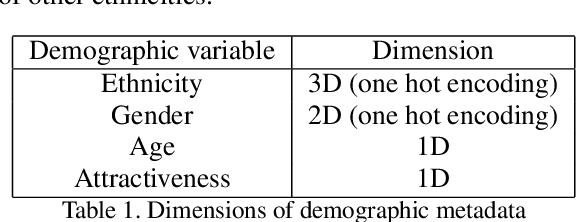
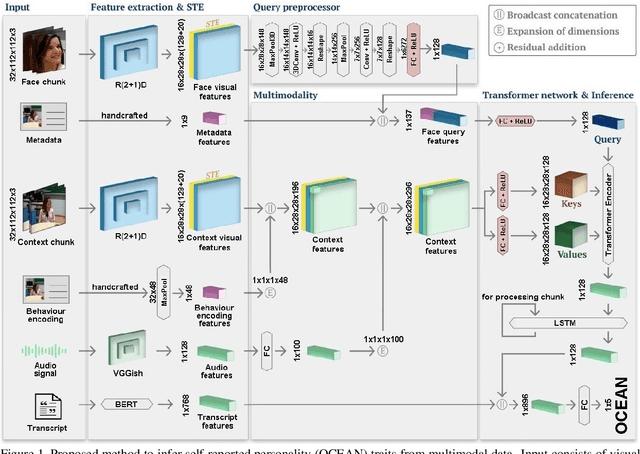
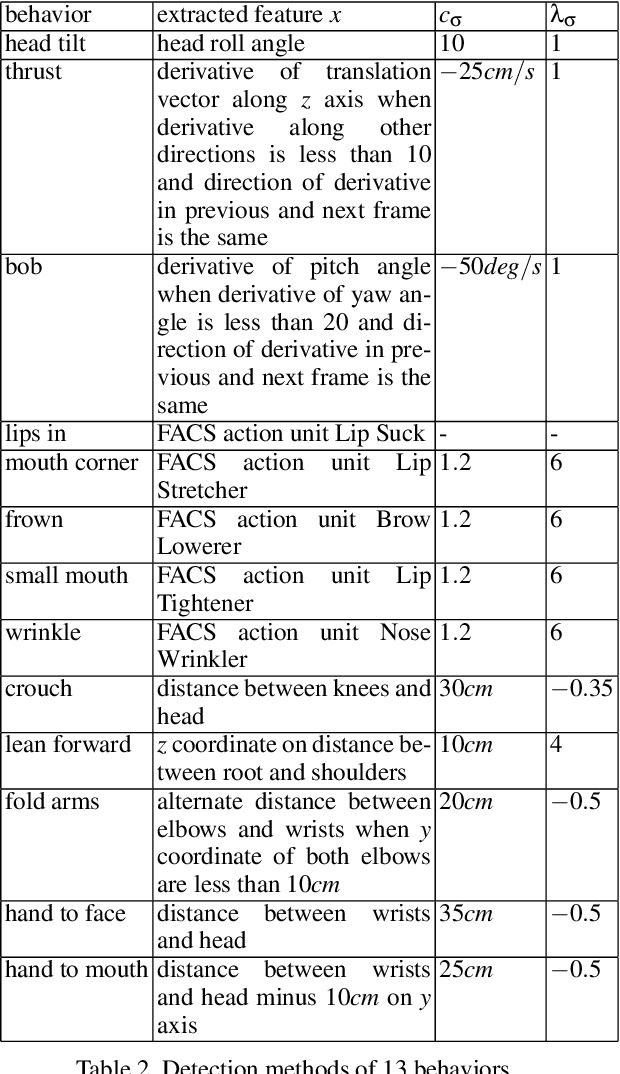
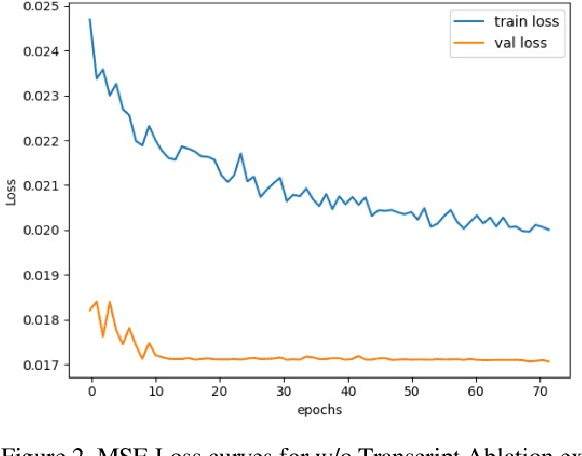
Abstract:Personality computing and affective computing have gained recent interest in many research areas. The datasets for the task generally have multiple modalities like video, audio, language and bio-signals. In this paper, we propose a flexible model for the task which exploits all available data. The task involves complex relations and to avoid using a large model for video processing specifically, we propose the use of behaviour encoding which boosts performance with minimal change to the model. Cross-attention using transformers has become popular in recent times and is utilised for fusion of different modalities. Since long term relations may exist, breaking the input into chunks is not desirable, thus the proposed model processes the entire input together. Our experiments show the importance of each of the above contributions
 Add to Chrome
Add to Chrome Add to Firefox
Add to Firefox Add to Edge
Add to Edge